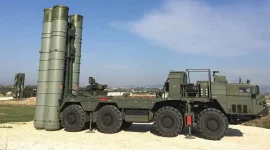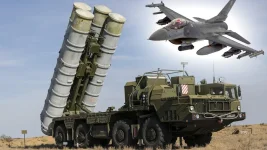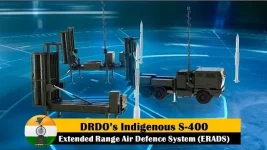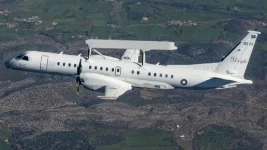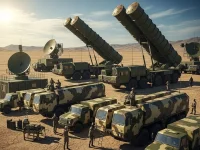- Views: 2K
- Replies: 11
The Indian Air Force (IAF) is moving to enhance the protection of its formidable S-400 'Triumf' air defence systems by integrating an additional layer of locally developed shields.
This strategic decision follows a reported, yet unsuccessful, attempt by Pakistan to target the advanced system and comes amid growing concerns over the potential future acquisition of hypersonic weapons by Islamabad from China.
The IAF is reportedly planning to deploy either the truck-mounted Very Short-Range Surface-to-Air Missile (VL-SRSAM) or the Quick Reaction Surface-to-Air Missile (QRSAM) to provide close-in defence for the S-400 batteries.
This move is designed to create a more resilient and multi-layered air defence network capable of neutralising a wider spectrum of aerial threats.
The S-400, known in Indian service as the "Sudarshan Chakra," is a long-range air defence system with a stated range of up to 400 kilometres. It serves as a cornerstone of India's national air defence, providing a strategic deterrent against hostile aircraft, cruise missiles, and ballistic missiles.
During recent flare-up, Pakistan allegedly launched a Chinese-made CM-400AKG supersonic missile from a JF-17 fighter jet in an attempt to disable an S-400 unit. The attack was thwarted by India's integrated air defence grid, with an older air defence system intercepting the missile.
According to a senior IAF official, the failure of the Pakistani strike can be attributed to the missile's design. The CM-400AKG is primarily an anti-ship weapon with a secondary land-attack role, not a specialised anti-radiation missile designed for the Suppression of Enemy Air Defence (SEAD) missions.
This mismatch rendered it ineffective against the S-400's sophisticated radar and defensive capabilities.
The same official noted that Pakistan is expected to learn from this event and likely seek more advanced projectiles from China, including hypersonic weapons, to challenge the S-400 in the future.
Hypersonic missiles, which travel at over five times the speed of sound and can manoeuvre mid-flight, pose a significant challenge to conventional air defence systems.
To counter these emerging threats, the IAF is looking to fortify its assets with indigenous solutions. Both the VL-SRSAM and QRSAM are developed by India's Defence Research and Development Organisation (DRDO).
- Quick Reaction Surface-to-Air Missile (QRSAM): This all-weather, mobile system has a range of up to 30 kilometres. It is designed to protect moving armoured columns and can engage multiple targets like fighter jets, drones, and low-flying cruise missiles. Its network-centric design allows for seamless integration with the IAF's command and control systems.
- Vertical Launch-Short Range Surface-to-Air Missile (VL-SRSAM): Based on the Astra air-to-air missile, this system provides 360-degree protection and is capable of neutralising various aerial threats at a range of up to 80 kilometres, including sea-skimming anti-ship missiles. Recent tests have validated its ability to engage targets at very low altitudes.
Furthermore, India is developing its own long-range air defence system under 'Project Kusha,' which aims to provide capabilities similar to the S-400.
The plan to procure and deploy these indigenous missile systems aligns with the government's 'Aatmanirbhar Bharat' (Self-Reliant India) policy, which aims to boost domestic defence production and reduce reliance on foreign military hardware.
By proactively adding layers of indigenous protection, the IAF seeks to maintain its strategic advantage and ensure its critical defence infrastructure remains secure against evolving regional threats.

